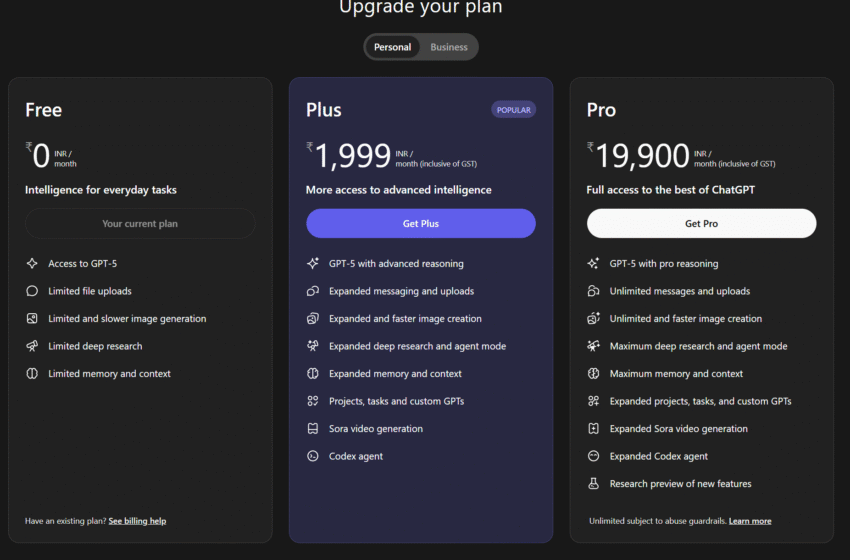OpenAI’s ChatGPT adds rupee pricing in India to make it easier to use

- OpenAI has introduced rupee-based pricing for ChatGPT in India, potentially reducing subscription costs by 75-85% to around ₹399 (~$4.55), aiming to make AI accessible to a broader audience.
- With India’s massive digital population and growing AI adoption, OpenAI sees the country as a potential top market, with CEO Sam Altman emphasizing its strategic importance.
- Collaborations with Reliance Industries and compliance with India’s data privacy laws are critical for the success of this initiative, amidst competition from local and global AI providers.
OpenAI has started charging in rupees for its main AI chatbot, ChatGPT, as part of a plan to get a piece of India’s growing tech market.
This is a big step toward making AI more available to Indian customers. This project, which has been published by reliable sources, shows that OpenAI sees India’s potential to be a worldwide leader in AI adoption because of its large internet population and burgeoning tech environment.
The goal of localized pricing is to remove financial barriers, which is in line with India’s quest for more technology and digital access.
OpenAI’s choice to test rupee pricing comes at the same time as talks with Indian business groups, namely Reliance Industries, which is led by Chairman Mukesh Ambani.
Reports say that OpenAI officials have looked at partnerships to make ChatGPT’s services more suitable for the Indian market. This might mean that subscription fees could go down by 75–85% compared to the US’s usual $20 monthly fee.
Recent changes to the ChatGPT web app configuration and Google Play Store show that the price of ChatGPT Plus could drop to as low as $4.55 (around ₹399). OpenAI is able to compete with both local and global firms in the AI industry by offering top AI services at such low prices. This is because Indian consumers are so price-sensitive.
Moneycontrol and other credible news sources have covered the move a lot. They pointed out that OpenAI is focusing on India as part of its larger plan to grow around the world.
AI firms need to pay close attention to India, which has a population of 1.4 billion and an internet user base that is rising quickly (over 900 million by 2025). Sam Altman, the CEO of OpenAI, has said in public that India might become the company’s biggest market, thanks to its young, tech-savvy population and the growing use of AI tools in areas like education, healthcare, and e-commerce.
The rupee pricing model is likely to speed up this trend by making ChatGPT’s advanced functions, such real-time communication and solving tough problems, available to students, professionals, and small enterprises.
This project is also in line with India’s bigger goals for technology. The government’s push for digital infrastructure, together with projects like the IndiaAI Mission, has made it easier for AI to be used. OpenAI’s localized pricing could lead to new ideas by letting developers and startups use ChatGPT in apps that are made for India’s wide range of languages and cultures.
However, there are still problems, such as rivalry from Indian AI companies like Krutrim and global heavyweights like Google, which are also trying to get into India’s AI sector.
Critics say that even while the lower prices are great, OpenAI needs to address worries about data privacy and make sure it follows India’s Digital Personal Data Protection Act (DPDP) to earn users’ trust.
OpenAI is said to be working with partners like Reliance to make sure that payment processing works well and that there is strong local support, which are also important for this pricing model to work.
The inclusion of rupee pricing shows that OpenAI is in India for the long haul, which might change the AI landscape. As the pilot goes live, people in the business expect a big increase in the use of ChatGPT, which will make India an even bigger player in the global AI market.


